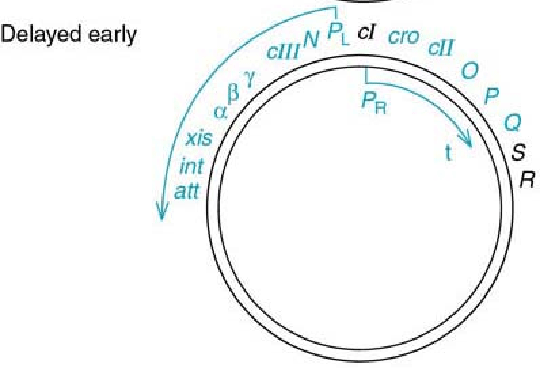
There are essentially two different types of bacteriophages: virulent and temporate phages. Virulent phages simply infect a host bacterium, undergo a lytic life cycle where the progenry phage lyse and kill their host bacterium and proceed to infect another target bacterium. In contrast, temporate phages have the capability of entering either a lytic life cycle or a lysogenic life cycle where the phage does not necessarily kill the host bacteria. Lambda phage is an example of a temporate phage. The beauty of lambda phage is that its life cycle is essentially determined by the early expression of a minimal amount of DNA binding proteins. One of these proteins, which will be the focus of this site, is the lambda represor, also called the cI repressor.

The life cycle that is taken by the phage is determined by the competetive expression arising from two promotors: PL and the PR promotors (pictured above). Transcription is initiated from both promoters. Cro, cII and cIII all intially accumulate as a result of expression from these promotors (see below). cII and cIII protiens bind DNA to recruit RNA polymerase to the PRE promotor to begin the production of the cI protein (lambda repressor). Once accumulating, cI protein binds operator sites (OR1, OR2, OR3) recruiting RNA polymerase to its own promotor (PRM) and promotes its own expression. Binding to these aids in stopping the expression of Cro, which is the protien involved in initiating a lytic cylce. Below is a pictoral representation of what is happening in the begining of lysogeny.
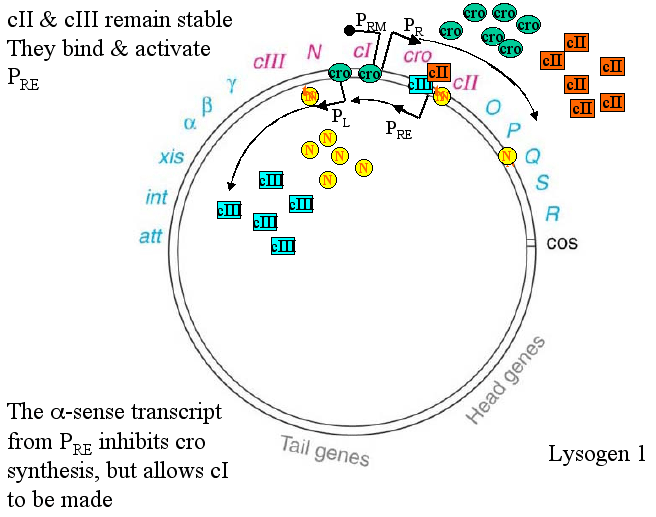 |
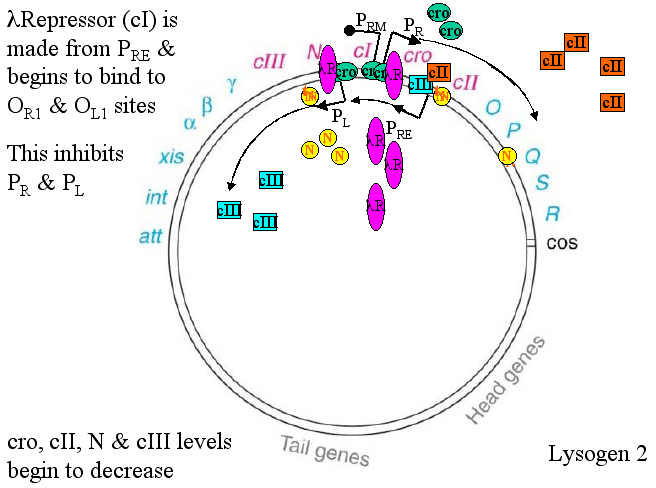 |
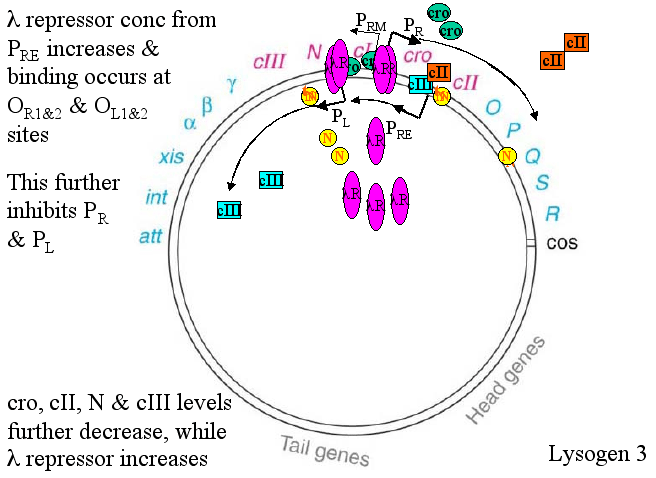 |
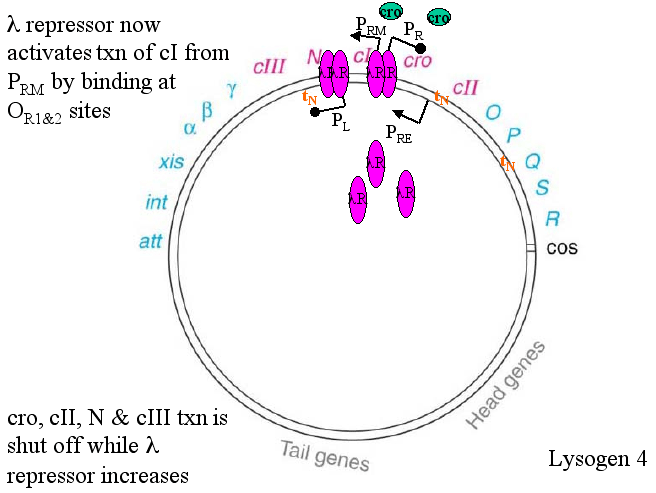 |
The remainder of this site will investigate the interactions that lambda repressor has with DNA of the OL1 operator's two half sites.